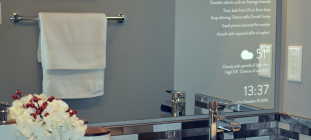
Behind every excellent presentation lies the power of visual storytelling, captivating audiences and leaving a lasting impact. But have you ever wondered what sets apart an average slide deck from an extraordinary one?
The answer lies in the dynamic interplay of two essential elements: PowerPoint templates and PPT themes.
These terms are often used interchangeably in presentations, blurring the lines between their actual distinctions. However, to unleash the full potential of your slides, it’s crucial to understand the unique roles played by templates and themes in crafting a persuasive narrative.
In this blog, we delve deep into the world of PowerPoint templates and themes, peeling back the layers to reveal their differences.
So, whether you’re a seasoned presenter seeking to refine your craft or a novice eager to unlock the secrets of compelling presentations, get ready to transform your slides into mesmerizing tales that captivate, inspire, and resonate with your audience like never before!
PowerPoint Templates
A PowerPoint template is a foundation for your presentation, including a pre-built design elements framework and sample slides.
Templates can include layouts, images, and other design elements that provide a visual foundation for your presentation.
PowerPoint templates typically include:
- A theme that determines the default colors, fonts, and visual effects for your presentation.
- Slide layouts that specify how information is displayed on each slide.
- Sample content that you can modify to fit your presentation needs.
Customization Options for PowerPoint Templates
One of the benefits of using a template is that it provides a visual foundation for your presentation while allowing for customization.
Customization options for PowerPoint templates include:
- Adding or removing slides
- Modifying the layout
- Changing the type and size of the presentation font
- Replacing images and graphics
- Modifying the color scheme
Pros and Cons of Using Templates for Presentations
Pros:
- Design Guidance: Templates offer pre-designed layouts and structures, guiding slide organization, content placement, and visual hierarchy, which can be especially useful for novice presenters.
- Time Savings: Using templates saves valuable time as there is no requirement to build slides from the ground up. They come with prebuilt elements such as headings, bullet points, and placeholders, enabling quick content insertion.
- Professional Look and Feel: Templates are designed by professionals, ensuring a polished and visually appealing presentation that enhances your message’s overall credibility and impact.
- Customization Flexibility: Templates can be customized to fit your specific needs. You can modify colors, fonts, and graphics while retaining the template’s underlying structure.
Cons:
- Generic Appearance: Since many presenters often use templates, there is a risk of a generic look and lack of uniqueness, making it challenging to stand out.
- Limited Personalization: While templates offer some customization options, they may still restrict full personalization, making it harder to align the design with your brand or individual style.
- Potential Overuse: Relying heavily on templates without adding personal touches or adapting them to your content may result in a cookie-cutter feel, diminishing the impact and engagement of your presentation.
PowerPoint Themes
A PowerPoint theme encompasses a pre-established collection of colors, fonts, and visual effects that can be effortlessly applied to your slides, resulting in a harmonious and polished appearance.
A theme provides a consistent visual identity throughout your presentation.
PowerPoint themes typically include:
- A color palette that determines the default colors for your presentation
- A font set defines the default font type and size
- Visual effects such as shadows and reflections
- Bullet styles that define the default style for your lists
Customization Options for PowerPoint Themes
While themes provide a consistent visual identity, you can still customize them to meet your needs.
Customization options for PowerPoint themes include:
- Changing the color palette
- Changing the font set
- Modifying the visual effects
- Changing the bullet style
Pros and Cons of Using Themes for Presentations
Pros:
- Consistent Visual Identity: Themes provide a cohesive visual identity throughout your presentation, ensuring that colors, fonts, and formatting remain consistent, creating a professional and polished look.
- Time Efficiency: Applying a theme to your entire presentation saves time, as it automatically updates all slides, allowing you to focus on content creation rather than design.
- Easy Customization: Themes offer flexibility, allowing you to customize elements such as background images, color schemes, and font styles to align with your branding or specific presentation needs.
- Seamless Updates: Making changes to a theme reflects across all slides, making it effortless to maintain a unified design, even when modifications are required.
Cons:
- Limited Creativity: While themes provide visual consistency, they may limit creative expression, as they follow predefined design patterns, restricting customization options beyond the provided settings.
- Lack of Uniqueness: As themes are pre-designed and readily available, there is a chance that other presenters may use the same or similar themes, resulting in a lack of originality.
- Inflexible Slide Design: Themes dictate the overall layout and structure of slides, which can be restrictive if you desire a non-traditional or unconventional presentation style.
Key Differences between Templates and Themes
Design Elements Included in Templates vs. Themes
The critical difference between templates and themes is the design elements they include.
Templates typically include a pre-built framework of design elements, sample slides, and boilerplate content.
In contrast, themes only include design elements such as colors, fonts, visual effects, and bullet styles.
Flexibility and Customization Options
Templates offer more flexibility in terms of customization, as they include a broader range of design elements and sample content that can be modified to suit your needs.
Themes are more limited in customization options, focusing primarily on colors, fonts, and visual effects.
Compatibility with Different Versions of PowerPoint
Both templates and themes are generally compatible across different versions of PowerPoint. Nevertheless, older software versions may lack certain advanced features or design elements.
It is always a good idea to check compatibility before using a template or theme, especially if you plan to share your presentation with others who may have different versions of PowerPoint.
When to Use PowerPoint Templates for Presentations?
PowerPoint templates are ideal when you need a pre-built framework for your presentation that includes design elements, sample slides, and boilerplate content.
Here are a few scenarios in which utilizing a template would be advantageous:
- Corporate presentations where you need to adhere to brand guidelines
- Educational presentations that follow a specific format
- Sales presentations that require a polished and professional look
- Presentations with complex content that benefits from a structured layout
When to Use PowerPoint Themes for Presentations?
PowerPoint themes are helpful when you want a consistent visual identity throughout your presentation without the need for a pre-built framework or sample content.
Here are a few scenarios in which utilizing a theme would be advantageous:
- Personal presentations where you want a unique look and feel
- Presentations that require more creative freedom and originality
- Smaller presentations where a full template may be unnecessary
- When you want to apply a consistent look across multiple presentations
Wrapping It Up
Understanding the critical differences between PowerPoint templates and themes is crucial for creating impactful presentations. While templates provide pre-designed slide layouts, themes offer consistent visual elements throughout the presentation.
Using templates saves time and effort in creating professional-looking slides, while themes provide a cohesive design that enhances the overall visual appeal. Whether you prioritize efficiency or visual consistency, choosing the correct option is essential based on your specific needs.
Remember to consider your content, audience, and desired outcome when selecting between PowerPoint templates and themes to make your presentations shine.

















